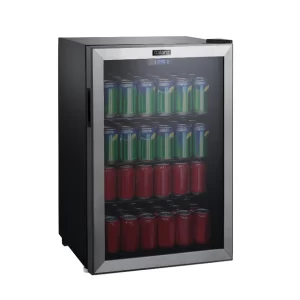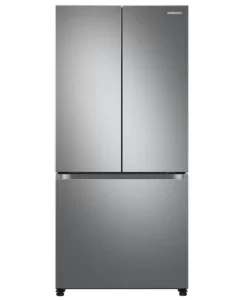Is it safe to paint a refrigerator?
Introduction:
Painting a refrigerator can be a tempting option for those looking to give their kitchen a fresh new look or to match their appliances with their desired color scheme.
This article aims to provide information on the safety of painting a refrigerator, discussing the potential risks, considerations, and steps to ensure a safe and successful painting project.
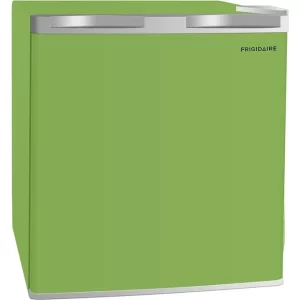
Is it safe to paint a refrigerator?
Potential Risks:
Before deciding to paint a refrigerator, it is important to consider the potential risks involved.
Paint could affect the performance and operation of the refrigerator if not applied correctly or if the wrong type of paint is used.
Improper paint application or using paint that is not suitable for refrigerator surfaces can lead to peeling, cracking, or even chipping of the paint.
Considerations for Painting a Refrigerator:
If you are considering painting a refrigerator, there are several factors that need to be taken into account to ensure safety and success.
Type of Refrigerator: The type of refrigerator plays a crucial role in determining whether it can be safely painted. Generally, refrigerators with a smooth, non-textured surface are more suitable for painting.
Surface Preparation: Proper surface preparation is essential for paint adhesion. Thoroughly clean the refrigerator’s surface, removing any dirt, grease, or residue. Sanding or priming may also be necessary to create a smooth surface for better paint adherence.
Paint Selection: Choosing the right type of paint is crucial for a successful painting project. Select paint that is specifically formulated for metal or appliances, as these paints are designed to withstand the temperature fluctuations and moisture levels associated with refrigerators.
Ventilation: Ensure that the painting area is well-ventilated to allow for proper air circulation and to minimize the inhalation of paint fumes. Open windows, doors, or use fans to improve ventilation during the painting process.
Safety Precautions: Take necessary safety precautions, such as wearing protective gloves, goggles, and a mask, to avoid direct contact with paint chemicals and fumes.
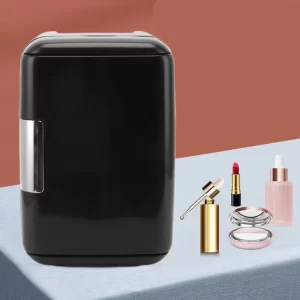
Steps to Safely Paint a Refrigerator:
If you have considered the potential risks and taken the necessary precautions, you can proceed with the following steps to safely paint a refrigerator:
a. Remove All Exterior Components: Before painting, remove all exterior components such as handles, hinges, and any other removable parts. This will ensure an even application of paint and prevent them from getting painted accidentally.
b. Clean and Prep the Surface: Thoroughly clean the refrigerator’s surface using a mild detergent and water. Remove any dirt, grease, or residue. If the refrigerator has a textured surface, consider sanding it lightly to create a smoother surface.
c. Apply Primer (if necessary): Apply a primer designed for metal or appliances if recommended by the paint manufacturer. A primer can improve paint adhesion and provide a better base for the paint to adhere to.
d. Apply Paint: Using a paintbrush or a roller, apply the chosen paint to the refrigerator’s surface. Follow the manufacturer’s instructions regarding the number of coats and drying time between coats. Ensure even coverage and avoid applying paint too thickly to prevent drips or runs.
e. Allow Sufficient Drying Time: Allow the painted refrigerator to dry completely between coats and after the final coat. Follow the recommended drying time provided by the paint manufacturer to ensure optimal paint adhesion and durability.
f. Reattach Exterior Components: Once the paint has dried completely, reattach all the exterior components that were removed earlier, such as handles and hinges. Ensure they are securely fastened and properly aligned.
g. Cure the Paint: To enhance the durability of the painted surface, it is advisable to allow the paint to cure for a period of time specified by the paint manufacturer. This will help the paint to fully harden and increase its resistance to scratching or chipping.
Maintenance and Cleaning:
After painting a refrigerator, it is important to maintain and clean the painted surface properly to ensure its longevity and appearance.
Avoid using abrasive cleaners, harsh chemicals, or scrub brushes on the painted surface, as these can damage the paint. Instead, use a mild detergent and a soft cloth or sponge for cleaning.
Regularly inspect the painted surface for any signs of wear or damage. Touch up any chips or scratches promptly to prevent further deterioration.
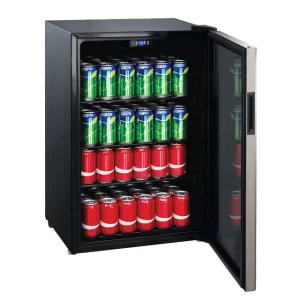
Professional Help:
If you are uncertain about painting a refrigerator or have concerns about potential risks, it is advisable to seek professional help.
Professional painters or appliance refinishing companies have the expertise and experience to ensure a safe and aesthetically pleasing paint job on refrigerators.
Alternatives to Painting:
If you are hesitant about the safety or durability of painting a refrigerator, there are alternatives to consider:
Vinyl Wrapping: Vinyl wrapping involves applying a specialized adhesive film to the refrigerator’s surface, providing a customized look without the need for paint. Vinyl wraps are removable and can be changed easily.
Magnetic or Decorative Panels: Magnetic or decorative panels are another option to change the appearance of a refrigerator. These panels easily adhere to the refrigerator’s surface and can be removed or replaced as desired.
Environmental Considerations:
When painting a refrigerator, it is important to consider the environmental impact of the paint and any associated chemicals.
Choose paint that is low in volatile organic compounds (VOCs) to minimize the release of harmful chemicals into the environment.
Properly dispose of any leftover paint and paint cans according to local regulations and guidelines to prevent pollution and harm to the environment.
Personalization and Aesthetics:
Painting a refrigerator can be an opportunity for personalization and creativity, allowing you to customize the appearance of your kitchen appliances.
Consider the overall aesthetic and style of your kitchen when choosing a color or design for the refrigerator.
Keep in mind that a painted refrigerator may alter the resale value or appeal to potential buyers if you plan to sell your home in the future.
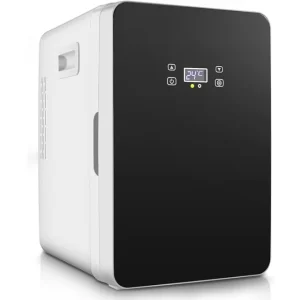
Assessing the Condition of the Refrigerator:
Before painting a refrigerator, evaluate its overall condition to ensure it is worth the investment of time and effort.
If the refrigerator has significant mechanical or structural issues, it may be more practical to consider replacing it rather than investing in a painting project.
Cost Considerations:
Painting a refrigerator can be a cost-effective alternative to purchasing a new appliance.
However, it is important to weigh the costs associated with purchasing the appropriate painting supplies, including primer, paint, and any required accessories.
Additionally, consider the time and effort required for proper surface preparation, painting, and post-painting maintenance.
Personal Skill and Confidence:
Painting a refrigerator requires some level of skill and confidence in DIY projects.
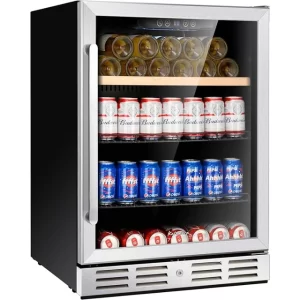
Conclusion:
Painting a refrigerator can be a safe and successful project if proper precautions and considerations are taken into account.
It is important to understand the potential risks involved and select the right type of paint suitable for refrigerator surfaces.
Thorough surface preparation, proper ventilation, and safety precautions are essential during the painting process.
